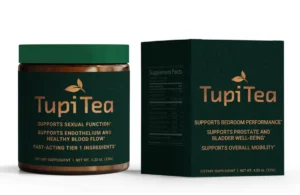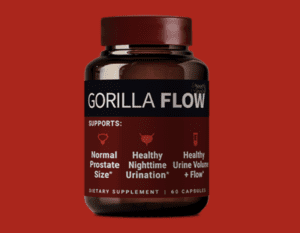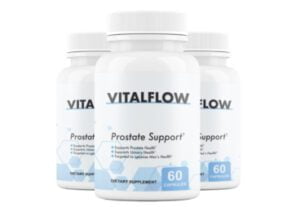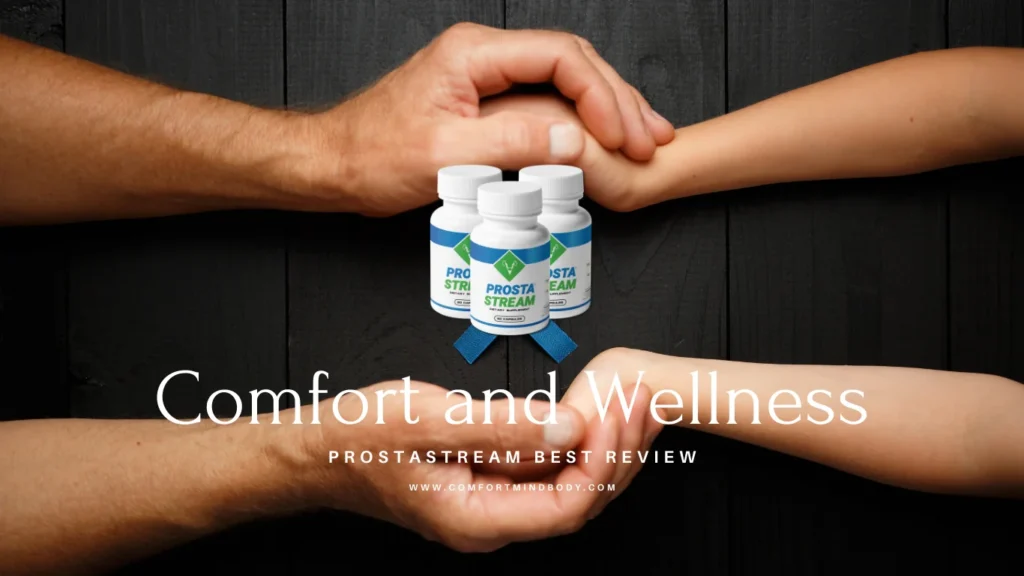Table of Contents
ToggleWhat is Prostate?
A man and his prostate dilemma? Let’s dive into a topic that’s crucial for every man: prostate health. Think of your prostate as a behind-the-scenes hero in your reproductive system. Located just below your bladder and in front of your rectum, it supports your urinary and reproductive functions. As you go through life, your prostate does not stay the same. It usually grows larger as you age, which can cause some health issues.
Meet Your Prostate:
Think of your prostate as the size of a walnut. It wraps around your urethra and helps make fluids for your semen. As the years roll by, it may start to act up, causing issues like benign prostatic hyperplasia (BPH).
The Path to Understanding:
Navigating prostate health can seem complex, but we’re here to simplify it for you. In this guide, we will reveal the secrets of your prostate. We will help you notice signs of problems. We will also look at possible solutions so you can enjoy life fully
Understanding Prostate Health: Types, Symptoms, and Treatments
A man and his prostate
When it comes to prostate health, knowledge is power. Let’s explore the various aspects of prostate-related conditions, their symptoms, and potential treatments:
Acute Bacterial Prostatitis: This condition often strikes suddenly due to a bacterial infection. If you have symptoms like fever, chills, or pain with prostate problems, see your doctor right away. Typically, antibiotics are the primary treatment, with additional therapies to manage pain and discomfort if needed.
Chronic Bacterial Prostatitis: Unlike the acute form, chronic bacterial prostatitis is recurrent and challenging to tackle. Prolonged antibiotic treatment might be necessary. Discuss alternative strategies with your specialist to improve your condition.
Chronic Prostatitis (Chronic Pelvic Pain Syndrome): This is a common prostate problem. It can cause pain in the lower back, groin, or tip of the penis. Managing chronic prostatitis may involve a combination of medications, lifestyle adjustments, and, in some cases, surgical options.
Benign Prostatic Hyperplasia (BPH): Common among older men, BPH denotes an enlarged prostate that isn’t cancerous. It’s a part of aging for many, and treatments vary based on the severity of symptoms.
Prostate Cancer: This condition stems from abnormal cell growth in the prostate. Some men have a higher risk of prostate cancer. For example, African American men are 75% more likely to get it than white men. Other risk factors include family history, smoking, obesity, and lifestyle choices. Treatment for prostate cancer should be discussed with your doctor, considering potential side effects.
Remember, your doctor is your best ally in managing prostate health. Open discussions about your condition and its potential treatments are essential for your overall well-being.
Recognizing Prostate Health Warning Signs
A man and his prostate
Understanding the signals your body sends is crucial for maintaining prostate health. Here are some symptoms that should prompt you to seek immediate medical attention:
Frequent Urge to Urinate: If you often feel the need to go to the restroom, it may be a sign of a prostate problem.
Nocturnal Urination: Waking up multiple times during the night to urinate is another potential red flag that warrants attention.
Hematuria and Hematospermia: Blood in your urine or semen should never be ignored.
Pain or Burning Sensation: Pain or discomfort during urination or ejaculation could indicate an underlying problem.
Pain and Stiffness: You might feel constant pain or stiffness in your lower back, hips, pelvic area, upper thighs, or rectal area. This could be related to prostate health issues.
Urinary Dribbling: Experiencing dribbling or difficulty in maintaining a steady urine flow is a symptom that requires investigation.
These symptoms can be indicative of various prostate-related conditions, including infections, inflammation, or even prostate cancer. Your health is paramount, so don’t hesitate to consult your doctor promptly if you experience any of these signs. Early detection and intervention can make a significant difference in your prognosis and overall well-being.
Managing Benign Prostatic Hyperplasia (BPH): Your Treatment Options
A man and his prostate
When dealing with Benign Prostatic Hyperplasia (BPH), several treatment options are available, tailored to your specific condition:
Watchful Waiting (Active Surveillance): If your symptoms are manageable, your doctor may suggest a “watch and wait” approach. This means you will monitor your condition without immediate treatment. This approach is used when your symptoms are not greatly affecting your life. This involves monitoring your condition over time to see if it worsens before considering more aggressive treatments.
Medications: Your doctor may prescribe medications to address BPH symptoms. These medications can help shrink the prostate or relax the muscles around it. This can ease urinary symptoms.
Surgery: When conservative treatments prove ineffective, surgical intervention may be advised. Surgical procedures can help improve urine flow and alleviate BPH symptoms.
Other Advanced Treatments: In some cases, new methods can help treat urinary problems caused by BPH. These methods use radio waves, microwaves, or lasers. These approaches use heat to reduce excess prostate tissue and improve urinary function.
Your treatment path will depend on the severity of your symptoms, overall health, and personal preferences. Talk about these options with your healthcare provider. This will help you find the best way to manage your BPH and improve your quality of life.
Nourishing Your Prostate: The Power of Prostate Health Foods
A man and his prostate
Eating a balanced diet full of fruits, vegetables, lean proteins, and healthy fats is important for your health. It also helps support prostate health. Within this spectrum, there are specific foods renowned as prostate health champions.
These foods have nutrients that can reduce inflammation. They can also boost immune function and may lower the risk of prostate problems, including cancer. By incorporating these foods into your diet alongside regular exercise, you’re taking proactive steps to support a robust prostate.
On the other hand, a diet high in red and processed meats, dairy, and unhealthy fats can raise the risk of prostate cancer. It is important to maintain a balanced diet that embraces the diverse array of prostate health foods. Your dietary choices today can significantly impact your prostate health tomorrow.

Man and his Prostate
Dietary Triumphs in Prostate Health: Real-Life Stories
Real-life stories and scientific research underscore the remarkable impact of diet on prostate health. Consider these compelling cases:
In a study published in the Journal of Urology, men followed a low-fat diet. They also took fish oil supplements. The results showed that their prostate cancer progressed more slowly. This was compared to men on a typical Western diet. The findings illuminate the potential for dietary choices to influence the course of prostate cancer.
Another study in the Journal of Human Nutrition and Dietetics highlighted how diet can change Benign Prostatic Hyperplasia (BPH). A diet high in fruits, vegetables, and whole grains can help with BPH symptoms. It also reduces urinary problems like frequency and urgency.
These cases show how powerful diet can be in managing and preventing prostate-related issues. They clearly show that adding prostate health foods to your meals is not just a choice. It is a smart way to support your prostate health and reduce the risk of problems.
Prostate Cancer Awareness: Detecting Signs and Prioritizing Health
A man and his prostate
Prostate cancer can often hide in the shadows, with subtle or easily overlooked warning signs. Detecting it early is critical. Treatment approaches vary based on the specific prostate condition. For example, alpha blockers can help by relaxing the bladder neck muscles in men with Benign Prostatic Hyperplasia (BPH).
Prostate health should be a priority for all men, as it can impact overall well-being and quality of life. Regular check-ups with your doctor are essential for the early detection and prevention of potential health complications. Follow your doctor’s advice diligently to ensure you maintain optimal prostate health and reduce future risks. Your proactive approach today can lead to a healthier tomorrow.
Product Recommendations:
Disclosure: Please note that the links within this product review may generate a small commission. This compensation aids in supporting our research and editorial team. We wish to highlight that our recommendations solely pertain to high-quality products.
Disclaimer: This article serves purely informational purposes and is not intended for the diagnosis, treatment, or cure of any medical condition. Prior to making any changes to your diet or lifestyle or taking supplements, it is imperative to consult a qualified healthcare professional.
Recommendation to Read to Learn More about Prostate:
References
- National Institute on Aging. https://www.nia.nih.gov
- Center of Disease Control and Prevention. https://www.cdc.gov/cancer/prostate/basic_info/what-is-prostate-cancer.htm
- U.S Department of Health and Human Services https://www.hhs.gov/
- InsideRx https://insiderx.com/blog/prostate-health










